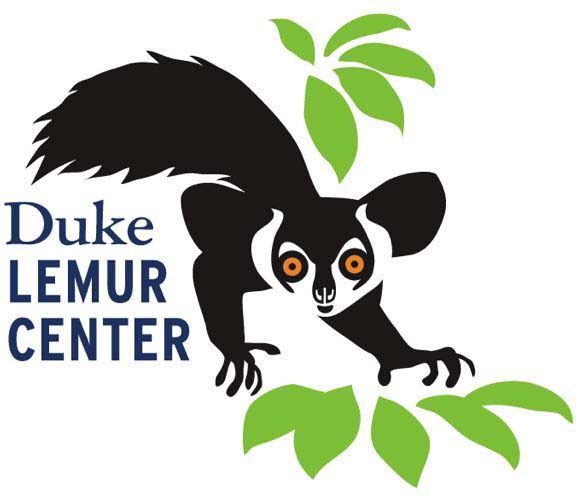Nycticebus pygmaeus

Pygmy slow lorises are among three species of loris maintained at the Lemur Center throughout its history (the others are the slow loris and the slender loris). The family Lorisidae includes lorises, galagos and pottos and consists of 9 genera and over 25 species found in Africa south of the Sahara, southern India, Sri Lanka, southeastern Asia and the East Indies. Lorises have a tail either very short or completely absent, and their heads and eyes are round, with small ears which are almost completely hidden by fur. The forelimbs and hind limbs of lorises are nearly equal in length. They are the most endangered of the non-lemur prosimian primates.
All lorises have extremely strong fingers and toes, and they are capable of maintaining a powerful grip with either hands or feet for astonishingly long periods of time. They are arboreal and nocturnal, sleeping by day in hollowed out trees, tree crevices or branches. Generally they sleep curled up in a ball, with their heads tucked up under their arms. When they move, they do so with slow deliberate hand-over-hand movements, moving along as easily under a branch as above. They are capable of moving quickly if alarmed, but typically they do not jump or leap.
In North America, the approximately 50 captive pygmy slow lorises are managed by a Species Survival Plan (SSP). Due to deforestation in their native Vietnam, pygmy slows are considered endangered. As of 2019, the DLC no longer houses lorises of any species.
Feeding

The foraging strategy and dietary habits of the pygmy slow loris are not unlike those of its larger relative, the slow loris. The animal is a nocturnal feeder, preferring to search for all of its food items under cover of night. They are capable of moving faster than slow lorises. Individuals forage alone, and mothers even “park” their infants in a safe place rather than carrying them along when they venture out.
Pygmy slow lorises are opportunistic feeders, consuming a wide variety of plant and animal material. They prefer soft fruits and gums, but will readily consume tender shoots and other plant parts. Pygmy slows have been observed gouging tree branches in an attempt to stimulate a flow of edible gums/sap.
They do not eat leaves, but may often lick them for moisture. The pygmy slow loris diet also includes a fair amount of animal protein, which comprises perhaps as much as 33% of the total. They are expert in catching insects, and often capture those that have a particularly pungent odor, which the lorises can track with their keen sense of smell.
Social Behavior

Like other loris species, pygmy slow lorises are nocturnal and arboreal. While they are considered to be solitary foragers, it is not uncommon for the territory of one male to overlap with that of several females. Males do not readily tolerate the presence of other males in their territory.
This species is more active at night and moves more quickly than some of the other lorises. In fact, studies have suggested that they are almost constantly in motion during the hours of darkness, pausing briefly only to feed.
If accosted, individuals can emit a strong odor warning predators not to attack. If the predator persists, the loris produces a secretion that is toxic when mixed with saliva. It may then bite the hapless predator. Although extensive research has not been conducted on this defense mechanism, it is known that the secretion is poisonous to humans, and many native peoples in Asia avoid lorises in the wild. If all other defenses fail, the animals may drop to the ground and flee, but only as a last resort.
Reproduction

The reproductive habits of the pygmy slow loris are very similar to those of the slow loris. Mothers give birth every 12 to 18 months, producing small litters of one or two individuals after a 188-day gestational period. When first born, infants cling to their mothers’ bellies, but mother’s will “park” their infants on a suitable branch (or in captivity the side of a cage) from day one whenever they need to forage for food. Infants are soon capable of moving around short distances on branches after being parked. Infants are weaned at about 133 days. Female offspring reach sexual maturity first, usually around nine months of age, while males may not do so until 18 or 20 months have elapsed.
Habitat/Conservation
While sympatric with slow lorises in part of its range, pygmy slow lorises are confined to a somewhat smaller geographical area. They are found in the countries of Vietnam, Laos, and the province of Yunnan in China. Where they do occur, members of this species are usually found in thick foliage deep in tropical rainforests. They are also sometimes found in bamboo groves.
Sparse distribution, coupled with a history of military activity and political upheaval in its home range, has taken its toll on this species. Pygmy slow lorises are the most endangered of all the non-lemur prosimians. During the Vietnam War, much of their habitat was destroyed and they nearly disappeared from that country altogether. Recent studies, however, suggest that the animal is making a comeback and that its population in the country of Laos may be thriving. Pygmy slow lorises are not hunted for food, but specimens are collected for sale as pets and for use in traditional medicine. They can frequently be found on sale at markets in Vietnam.
Fact Sheet
Order: Primates; Suborder: Prosimii
Superfamily : Lorisoidea; Family: Lorisidae
Genus: Nycticebus; Species: pygmaeus
Key Facts
Adult Size : 0.8 – 1.0 pounds
Natural Range : Vietnam, Laos, and parts of China
Social life : Solitary nocturnal forager
Habitat : Secondary forests, formally in primary rainforests
Diet : Fruits, other vegetation, and occasional small mammals and birds
Lifespan : over 20 years in captivity
Sexual maturity : females 9 months, males 17 – 20 months
Mating : Once every 12 – 18 months
Gestation : 188 days
Number of young : 1 – 2 offspring every 1 – 1 ½ years
DLC Naming theme : Insect names (Grasshopper, Skimmer, Junebug, Io Moth, Warble)
Interesting Facts
- Pygmy lorises sleep rolled up in a ball with their head between their legs.
- Pygmy lorises often hang upside-down from branches by their feet so they can use both hands to eat.
- The native habitat of pygmy lorises was devastated during the Vietnam War. They are the most endangered of the non-lemur prosimians.
- Pygmy lorises are often sold in the markets in Vietnam.

